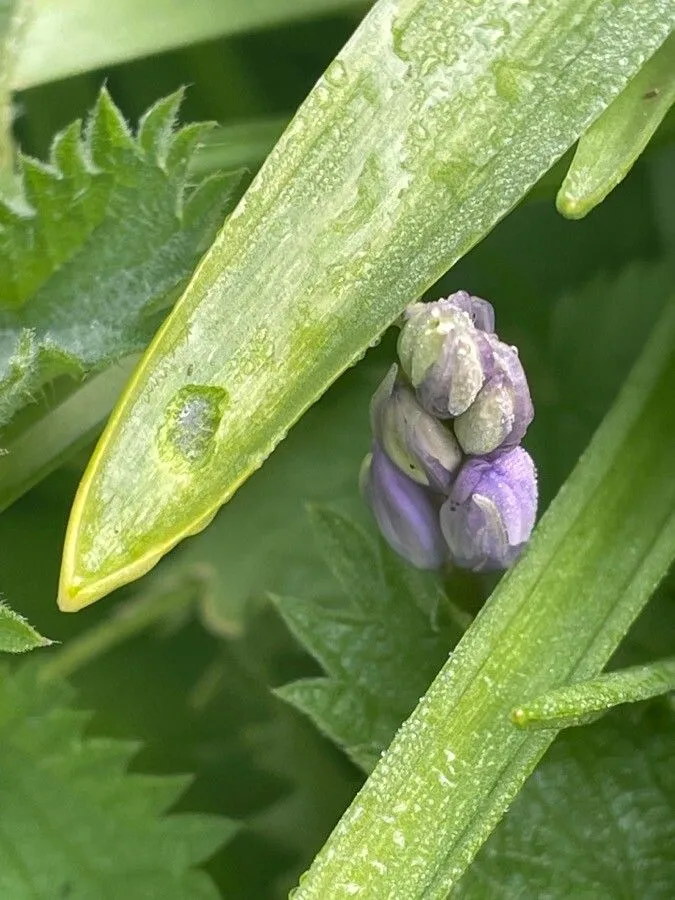
Author: Geerinck
Bibliography: Belg. J. Bot. 129: 83 (1996 publ. 1997)
Year: 1997
Status: accepted
Rank: hybrid
Genus: Hyacinthoides
Vegetable: False
Observations: NW. Spain
Hyacinthoides × massartiana: A Botanical Gem of Northwestern Spain
Hyacinthoides × massartiana, often simply referred to as Hyacinthoides, is a captivating plant species celebrated for its ornamental beauty and ecological significance. Belonging to the Asparagaceae family, this hybrid botanical specimen embodies the delicate interplay between its parent species, contributing to the richness of plant life in its natural habitats.
Identification and Appearance
Hyacinthoides × massartiana is renowned for its striking floral display that typically blooms in the late spring. The plant features clusters of bell-shaped flowers with an enchanting blue-violet hue, though variations may include pink or white blossoms. Each flower head is suspended gracefully from slender, arching stems that rise from a basal rosette of broad, dark green leaves. The overall effect is one of elegance and charm, making it a popular choice for gardeners and plant enthusiasts.
Ecological Significance
This plant is more than just a pretty face; it plays a crucial role in supporting local ecosystems, particularly in Northwestern Spain, where it has been extensively observed. Hyacinthoides × massartiana provides nectar and pollen for a variety of pollinators, including bees and butterflies, thereby promoting biodiversity. Its tendency to naturalize and spread across woodlands, meadows, and shaded areas helps maintain soil stability and prevent erosion.
Habitat and Cultivation
The preferred habitat of Hyacinthoides × massartiana includes shaded woodlands and well-drained soils, where it can thrive with minimal human intervention. It is highly adaptable and can grow in a range of soil types, though it prefers a slightly acidic to neutral pH balance. For cultivation purposes, gardeners should plant the bulbs in autumn to ensure a vibrant spring display. Once established, this plant requires minimal care, making it an excellent choice for naturalistic garden settings.
Historical and Contemporary Context
Documented in the Belgian Journal of Botany in 1996 and published in 1997 by author Geerinck, Hyacinthoides × massartiana has garnered significant attention in the botanical community. Its hybrid nature makes it an intriguing subject for studies on plant genetics and hybridization processes. Additionally, its resilience and beauty have made it a beloved ornamental plant in various European gardens.
Conservation Status
While Hyacinthoides × massartiana is not currently listed as endangered, ongoing conservation efforts are essential to preserve its natural habitats and ensure its survival amid increasing environmental changes. Conservationists and botanists continue to monitor its populations to safeguard this botanical gem for future generations.
In summary, Hyacinthoides × massartiana is a remarkable plant species that combines aesthetic appeal with ecological importance. Whether observed in the wilds of Northwestern Spain or cultivated in a garden, this plant stands as a testament to the intricate beauty of nature and the enduring fascination it holds for botanists and plant lovers alike.
En: Hyacinthoides
Nl: Wilde × Spaanse hyacint, Basterdhyacint
De: Bastard-Hasenglöckchen
Nb: Hybridklokkeblåstjerne
Nn: Hybridklokkeblåstjerne
Sv: Hybridklockhyacint
Taken Apr 10, 2022 by Maarten Vanhove (cc-by-sa)
Taken Mar 28, 2022 by David Hocken (cc-by-sa)
Taken Mar 28, 2022 by David Hocken (cc-by-sa)
Taken Mar 28, 2022 by David Hocken (cc-by-sa)
Taken Mar 28, 2022 by David Hocken (cc-by-sa)
Taken Apr 9, 2022 by Maarten Vanhove (cc-by-sa)
Taken Mar 28, 2022 by David Hocken (cc-by-sa)
© copyright of the Board of Trustees of the Royal Botanic Gardens, Kew.
© copyright of the Board of Trustees of the Royal Botanic Gardens, Kew.
© copyright of the Board of Trustees of the Royal Botanic Gardens, Kew.
Family: Myrtaceae Author: (F.Muell.) K.D.Hill & L.A.S.Johnson Bibliography: Telopea 6: 402 (1995) Year: 1995 Status:…
Family: Rubiaceae Author: Pierre ex A.Froehner Bibliography: Notizbl. Bot. Gart. Berlin-Dahlem 1: 237 (1897) Year:…
Family: Sapindaceae Author: Koidz. Bibliography: J. Coll. Sci. Imp. Univ. Tokyo 32(1): 38 (1911) Year:…
Family: Asteraceae Author: A.Gray Bibliography: Pacif. Railr. Rep.: 107 (1857) Year: 1857 Status: accepted Rank:…
Family: Fabaceae Author: Medik. Bibliography: Vorles. Churpfälz. Phys.-Ökon. Ges. 2: 398 (1787) Year: 1787 Status:…
Family: Aspleniaceae Author: (Cav.) Alston Bibliography: Bull. Misc. Inform. Kew 1932: 309 (1932) Year: 1932…